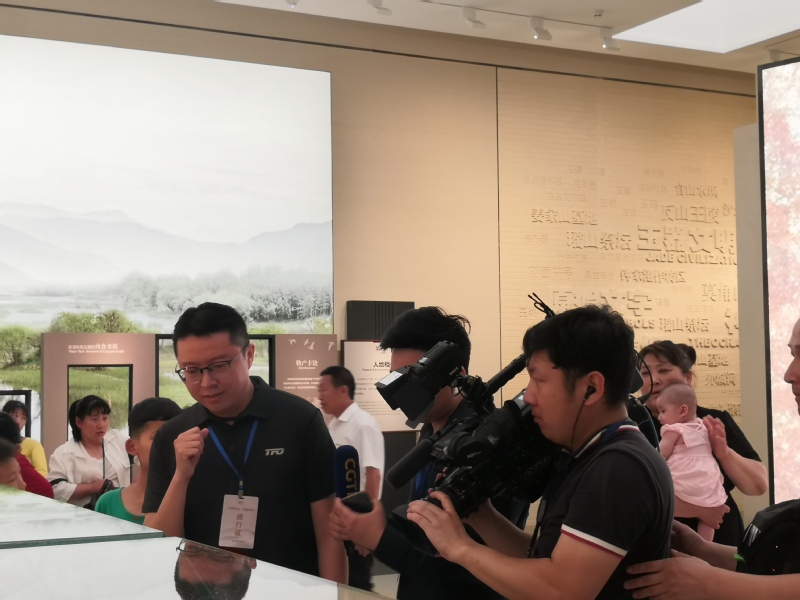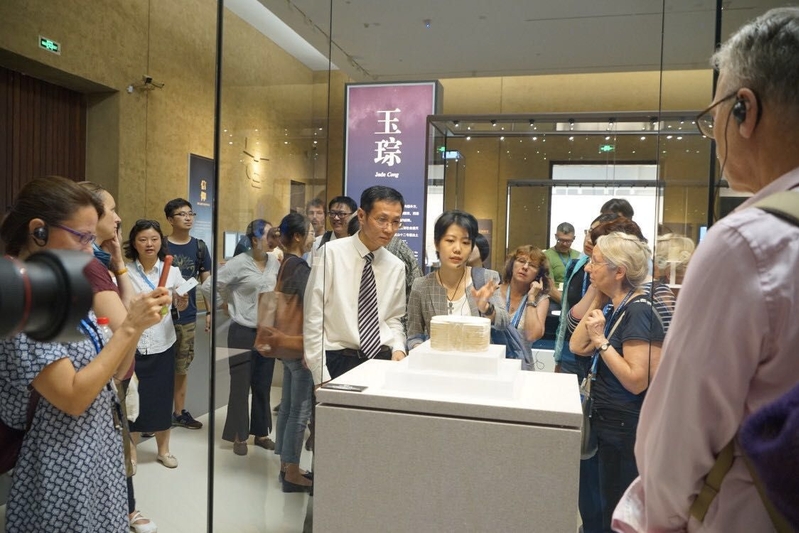The Archaeological Ruins of Liangzhu City, located in northwestern Hangzhou, was inscribed onto the UNESCO World Heritage List on July 6, 2019 during the 43rdsession of the World Heritage Committee in Baku, Azerbaijan. The World Heritage List now includes 55 properties across China. The Archaeological Ruins of Liangzhu City represents the highest achievement made in rice-cultivating agriculture in the late Neolithic in China 5,000 years ago. Moreover, the inscription demonstrates that the Chinese civilization, with its history of 5,000years, has been evidenced solid by the whole world.
Students and teachers from the Institute of Translation Studies at School of International Studies (SIS), Zhejiang University, has undertaken substantial work, including translation and proofreading of the inscription texts and other related work with the support of Chinese Academy of Translation and Translation Studies as well as Translation Studio of ZJU.
In May 2017, entrusted by the Administrative Committee of Liangzhu Archaeological Administrative District, Hangzhou, SIS established a translation project for the inscription of the Archaeological Ruins of Liangzhu. From May, 2017 to early January, 2018, Zhu Xiaoyu and Gao Rui, teachers of the Institute of Translation Studies, led a team to translate and proofread the texts with all-together millions of words, including A Comprehensive Research Report on Liangzhu City and The Archaeological Sites Of Liangzhu City. The translation team consisted of Feng Yitian, Wang Yanni and He Peifan, three MTI students, Ruan Yishuai and Liu Meijun, two seniors in translation, Ma Qingquan from English major and Jin Yufe from Chu Kochen Honors College. In early 2018, Zhu Xiaoyu and Gao Rui finished translating and proofreading the main inscription textwith 200,000 words, namely the Nomination Literature of the Archaeological Ruins of Liangzhu City for its Inscription onto the World Heritage List. In August, 2018, Zhu Xiaoyu assisted the National Cultural Heritage Administration and Administrative Committee of Liangzhu Archaeological Administrative District with pilot inspection, which was in preparation for the field assessment by the International Council on Monuments and Sites. Xu Xueying, deputy director to the Institute of Translation Studies, along with some students such as Feng Yitian and Wang Yanni, translated and proofread the exhibition texts in the Archaeological Ruins of Liangzhu City. On September 6, 2018, Mr. Zhu Xiaoyu and Mr. Yu Jianqing served as simultaneous interpreters for the International Symposium of the Archaeological Ruins of Liangzhu City in 4thWorld Cultural Heritage Convention. Meanwhile, Ma Qingquan offered English commentaries to conferees in their visit to the Langzhu Museum. From September 19 to 25, 2018, Zhu Xiaoyu interpreted for the experts from ICOMOS when they had a discussion during the assessment of the Archaeological Ruins. From August 2018 to January 2019, Zhu Xiaoyu, Gao Rui and Wang Yanni translated and proofread ten-thousand-word materials for the preparation of inscription. In May, 2018, Zhu Xiaoyu, Wang Yanni, Ma Qingquan and Ruan Yishuai proofread the translation of the final assessment report. Meanwhile, Liu Meijun interpreted for the delegates of UNESCO when they visited Liangzhu. In June, 2019, Xu Xueying and Zhu Xiaoyu translated and proofread the exhibition texts of the Archaeological Ruins of Liangzhu City. In July, 2019, Zhu Xiaoyu and Ma Qingquan were interviewed by CGTN on the inscription of the Archaeological Ruins of Liangzhu City.
The Translation Team, with continued support from the Institute of Translation Studies, of School of International Studies, and of Zhejiang University, made contributions to the inscription of the Archaeological Ruins of Liangzhu City onto the World Heritage List by providing the inscription texts with accuracy, expressiveness and elegance.


Institute of Translation Studies, SIS
July 8, 2019
Written by Zhu Xiaoyu
Proofread by Gao Rui
Translated by Li Qian
Edited by Xu Xueying



